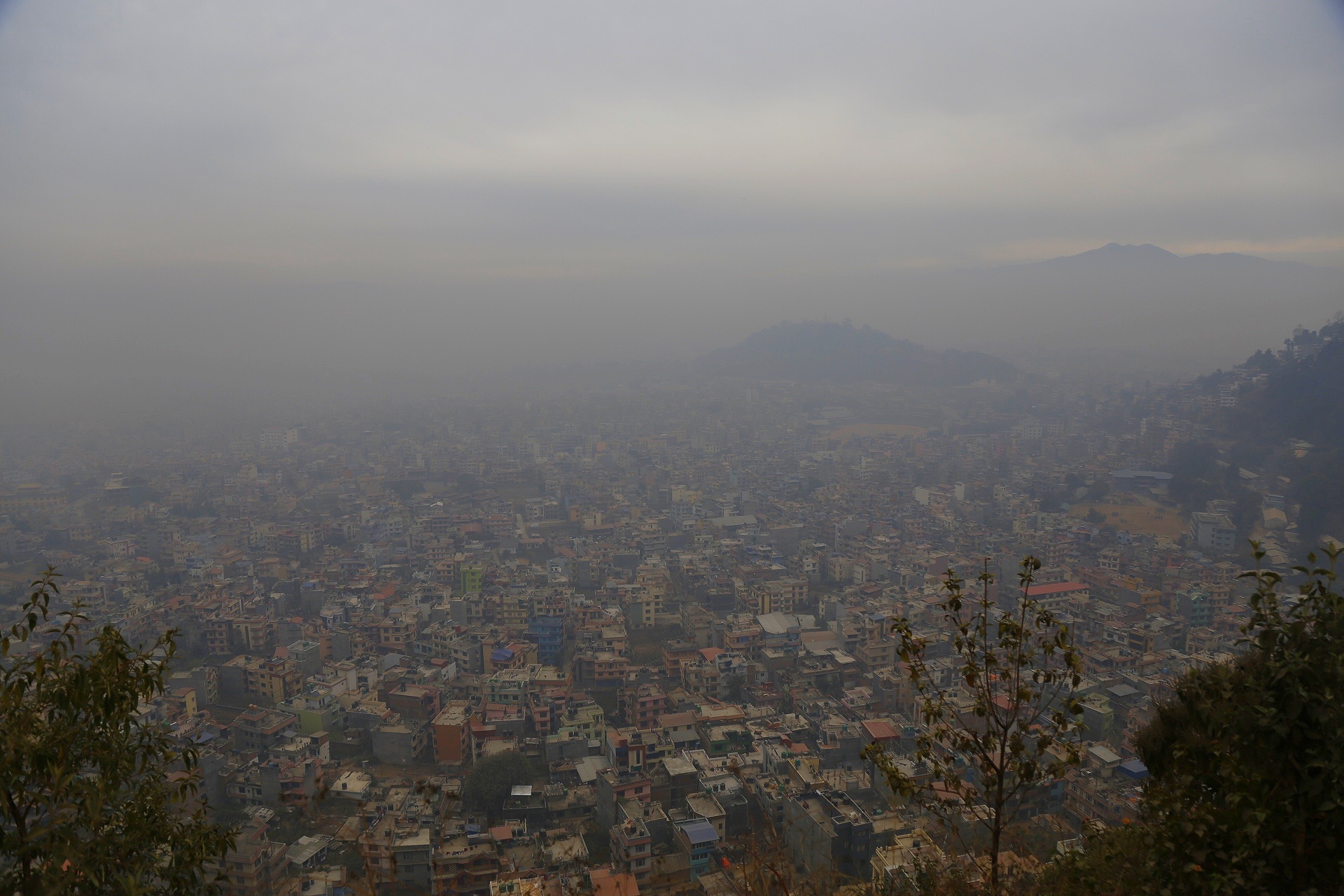Report on Air Quality Alert in Central Ohio and its Implications for Sustainable Development Goals
Executive Summary
On July 15, the Mid-Ohio Regional Planning Commission issued an air quality alert for the central Ohio region. The forecast Air Quality Index (AQI) of 101 signifies conditions that are unhealthy for sensitive populations, directly challenging the achievement of several United Nations Sustainable Development Goals (SDGs), most notably SDG 3 (Good Health and Well-being) and SDG 11 (Sustainable Cities and Communities).
Health Impacts and Alignment with SDG 3: Good Health and Well-being
The elevated AQI poses a direct threat to public health, a core component of SDG 3. The goal aims to ensure healthy lives and promote well-being for all at all ages. An AQI of 101 indicates that air quality is poor enough to aggravate health conditions, particularly for vulnerable individuals.
- Sensitive Groups Affected:
- Active children
- Older adults
- Individuals with pre-existing respiratory diseases, such as asthma
- Health Recommendations: The commission advised these groups to limit prolonged outdoor exertion, a measure necessary to protect public health but one that underscores the failure to provide a consistently safe environment.
Causative Factors and a Challenge to SDG 11: Sustainable Cities and Communities
The primary cause of the alert is high ground-level ozone, exacerbated by specific weather patterns. This situation highlights critical challenges related to SDG 11, which seeks to make cities and human settlements inclusive, safe, resilient, and sustainable.
- Primary Pollutant Source: The majority of ozone pollution in the region originates from vehicle emissions (cars and trucks), a key challenge for urban sustainability.
- Compounding Factors:
- A high-pressure weather system
- High ambient temperatures
- Partly sunny conditions that facilitate ozone formation
- Light and variable winds preventing the dispersion of pollutants
This reliance on fossil-fuel-based transportation directly conflicts with the objectives of SDG 7 (Affordable and Clean Energy) and SDG 13 (Climate Action), as the emissions contributing to poor air quality are often linked to greenhouse gases.
Recommended Mitigation Strategies and Citizen Contribution to the SDGs
The Planning Commission provided actionable recommendations for the public to mitigate air pollution. These individual and collective actions are crucial for advancing local progress on SDG 11 and SDG 13 by reducing the urban environmental footprint.
- Reduce Vehicle Idling: Minimize emissions from stationary vehicles.
- Adjust Refueling Times: Refuel vehicles after daylight hours to reduce the formation of ozone.
- Limit Use of Gas-Powered Equipment: Avoid using gas-powered lawnmowers and other machinery, which are significant sources of ozone precursors.
Forecast and Conclusion
While the air quality was projected to improve to good and moderate levels by July 20, the incident serves as a critical reminder of the interconnectedness of public health, urban planning, and environmental policy. Addressing the root causes of air pollution is essential for making meaningful progress on the Sustainable Development Goals, ensuring that communities are not only economically vibrant but also healthy and environmentally sustainable for all residents.
1. Which SDGs are addressed or connected to the issues highlighted in the article?
-
SDG 3: Good Health and Well-being
The article directly connects to SDG 3 by focusing on the health impacts of poor air quality. It states that the conditions could be “unhealthy for sensitive groups,” specifically mentioning “active children, older adults and people with respiratory diseases, such as asthma,” who are more likely to experience “aggravated symptoms.” This highlights the goal of ensuring healthy lives and promoting well-being for all at all ages.
-
SDG 11: Sustainable Cities and Communities
The issue is framed within an urban and regional context (“central Ohio,” “Columbus region”), making SDG 11 relevant. The article identifies urban activities as the primary source of pollution, noting that “Most ozone pollution in central Ohio comes from cars and trucks.” The involvement of the “Mid-Ohio Regional Planning Commission” in issuing alerts and advising citizens underscores the role of urban planning and management in addressing environmental challenges in cities.
-
SDG 13: Climate Action
The article links the air quality issue to weather patterns that are associated with climate change. It mentions that the pollution is “exacerbated by a high-pressure weather system, high temperatures and partly sunny conditions.” The focus on high temperatures and the sources of pollution (fossil fuel-powered vehicles and equipment) connects the local air quality problem to the broader issue of climate change and the need for action.
2. What specific targets under those SDGs can be identified based on the article’s content?
-
Target 3.9: Substantially reduce deaths and illnesses from pollution
This target aims to “substantially reduce the number of deaths and illnesses from hazardous chemicals and air, water and soil pollution and contamination.” The article’s entire premise is an “air quality alert” issued because of pollution that makes conditions “unhealthy” and can cause “aggravated symptoms” in vulnerable populations, directly addressing the goal of reducing illnesses from air pollution.
-
Target 11.6: Reduce the environmental impact of cities
This target is to “reduce the adverse per capita environmental impact of cities, including by paying special attention to air quality.” The article is exclusively about poor air quality in a specific urban region (central Ohio) caused by urban pollution sources (“cars and trucks”). The actions of the Regional Planning Commission and the advice given to citizens are direct attempts to manage and mitigate this adverse environmental impact.
-
Target 13.2: Integrate climate change measures into policies and planning
This target calls for integrating climate change measures into national and local policies and planning. The article demonstrates this at a regional level. The “Mid-Ohio Regional Planning Commission” issuing an “air quality alert” is a form of strategic planning and public policy implementation to respond to an environmental problem worsened by climate-related factors like “high temperatures.”
3. Are there any indicators mentioned or implied in the article that can be used to measure progress towards the identified targets?
-
Air Quality Index (AQI)
The article explicitly mentions the Air Quality Index as the primary metric for the alert. It states, “The air quality index in the region is forecasted to be 101.” The AQI is a direct indicator used to measure air pollution levels and their corresponding health risks. Tracking the AQI over time would measure progress towards reducing air pollution (Target 11.6) and its health impacts (Target 3.9).
-
Levels of Specific Pollutants
The article implies the measurement of specific pollutants that contribute to the AQI. It mentions “higher ozone in the area” and the accumulation of “smoke and other pollutants” leading to “elevating particle levels.” These specific pollutants (ozone, particles) are key components of air quality monitoring and are central to Indicator 11.6.2 (Annual mean levels of fine particulate matter).
-
Implementation of Public Advisories and Plans
The existence and issuance of the “air quality alert” by the “Planning Commission” is itself a qualitative indicator. It shows that a system for monitoring and public response is in place, which relates to the integration of environmental and climate-related planning (Target 13.2). The specific recommendations, such as to “avoid idling vehicles” and “refueling during daylight hours,” are indicators of the strategies being implemented.
4. Create a table with three columns titled ‘SDGs, Targets and Indicators” to present the findings from analyzing the article.
| SDGs | Targets | Indicators |
|---|---|---|
| SDG 3: Good Health and Well-being | Target 3.9: By 2030, substantially reduce the number of deaths and illnesses from hazardous chemicals and air, water and soil pollution and contamination. | The article mentions health effects on “sensitive groups” and “aggravated symptoms,” which are directly related to illnesses caused by air pollution. |
| SDG 11: Sustainable Cities and Communities | Target 11.6: By 2030, reduce the adverse per capita environmental impact of cities, including by paying special attention to air quality. | The article explicitly provides the Air Quality Index (AQI) value of 101 and mentions “higher ozone” and “elevating particle levels” in the Columbus region. |
| SDG 13: Climate Action | Target 13.2: Integrate climate change measures into national policies, strategies and planning. | The issuance of an “air quality alert” by the “Mid-Ohio Regional Planning Commission” serves as a qualitative indicator of regional planning and strategy implementation in response to an environmental issue exacerbated by “high temperatures.” |
Source: dispatch.com







